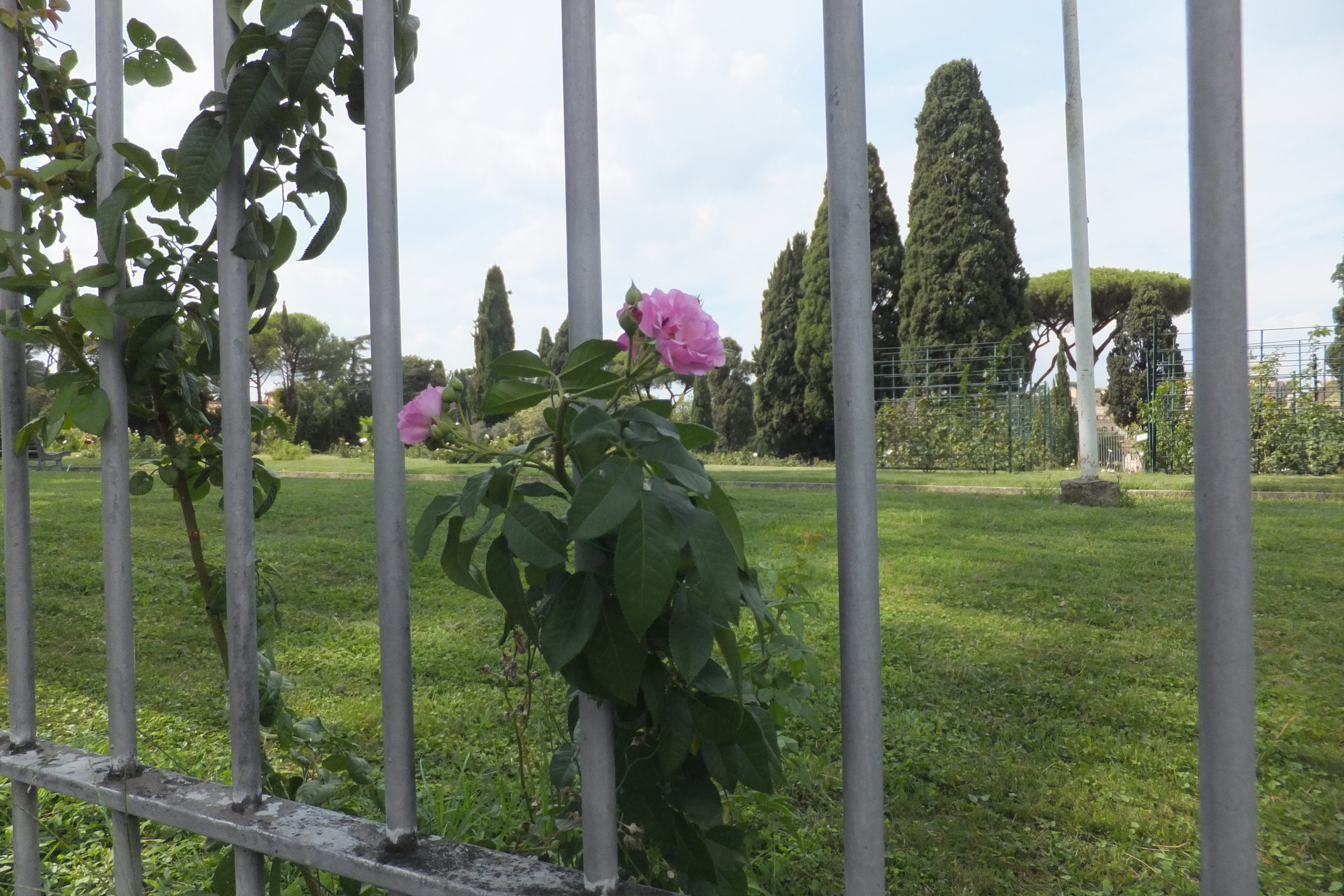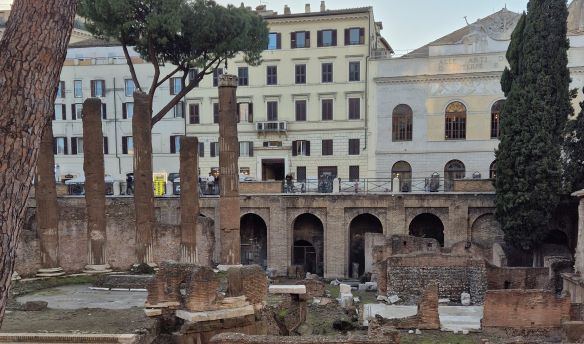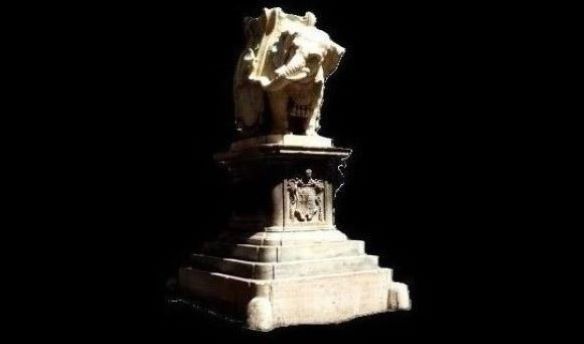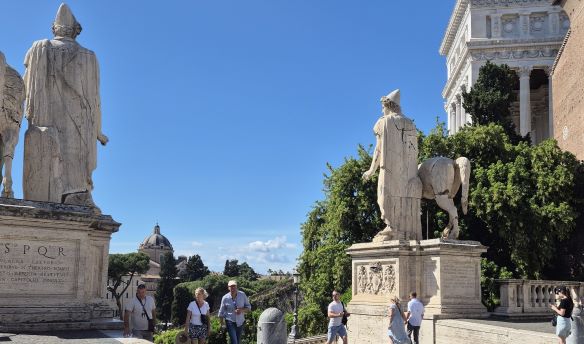This walk takes fewer than thirty minutes but you may wish to spend longer, looking at the sights. Why not leave the bustling Piazza Venezia and follow the curving Via Teatro Marcello? As you leave Piazza Venezia, the Vittoriano will be on your left and you will see the statue of Vittorio Emanuele II, appearing through the trees.
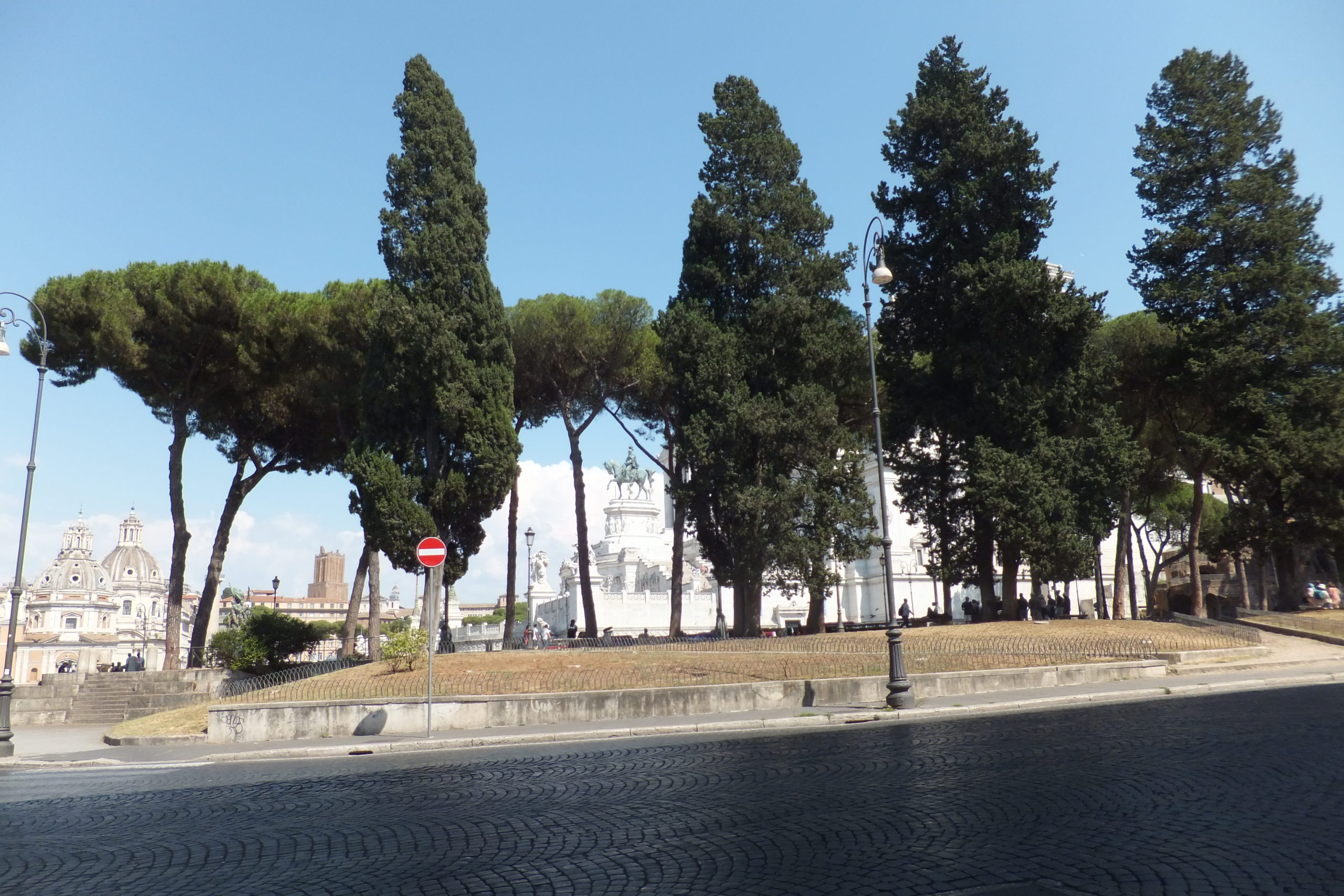
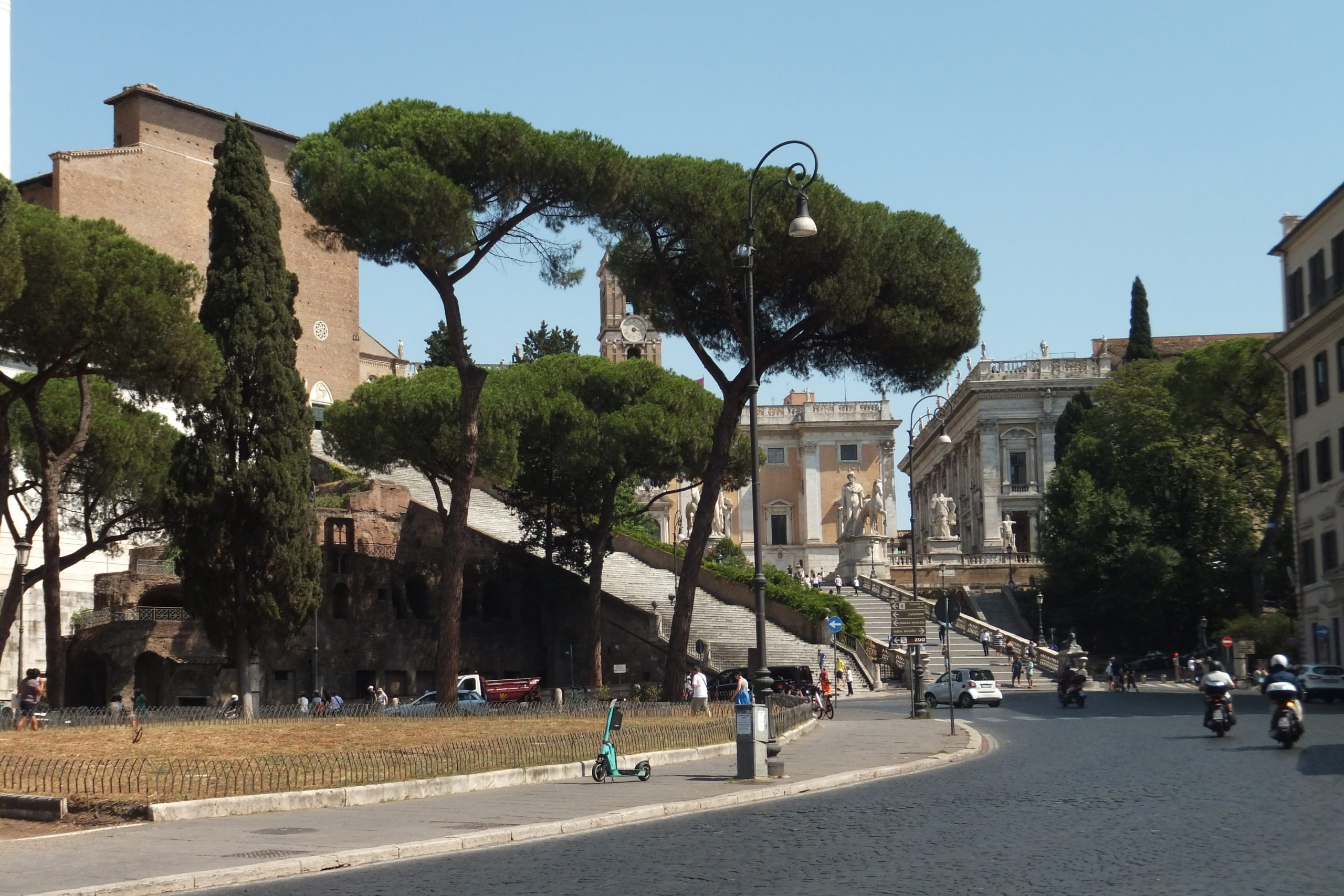
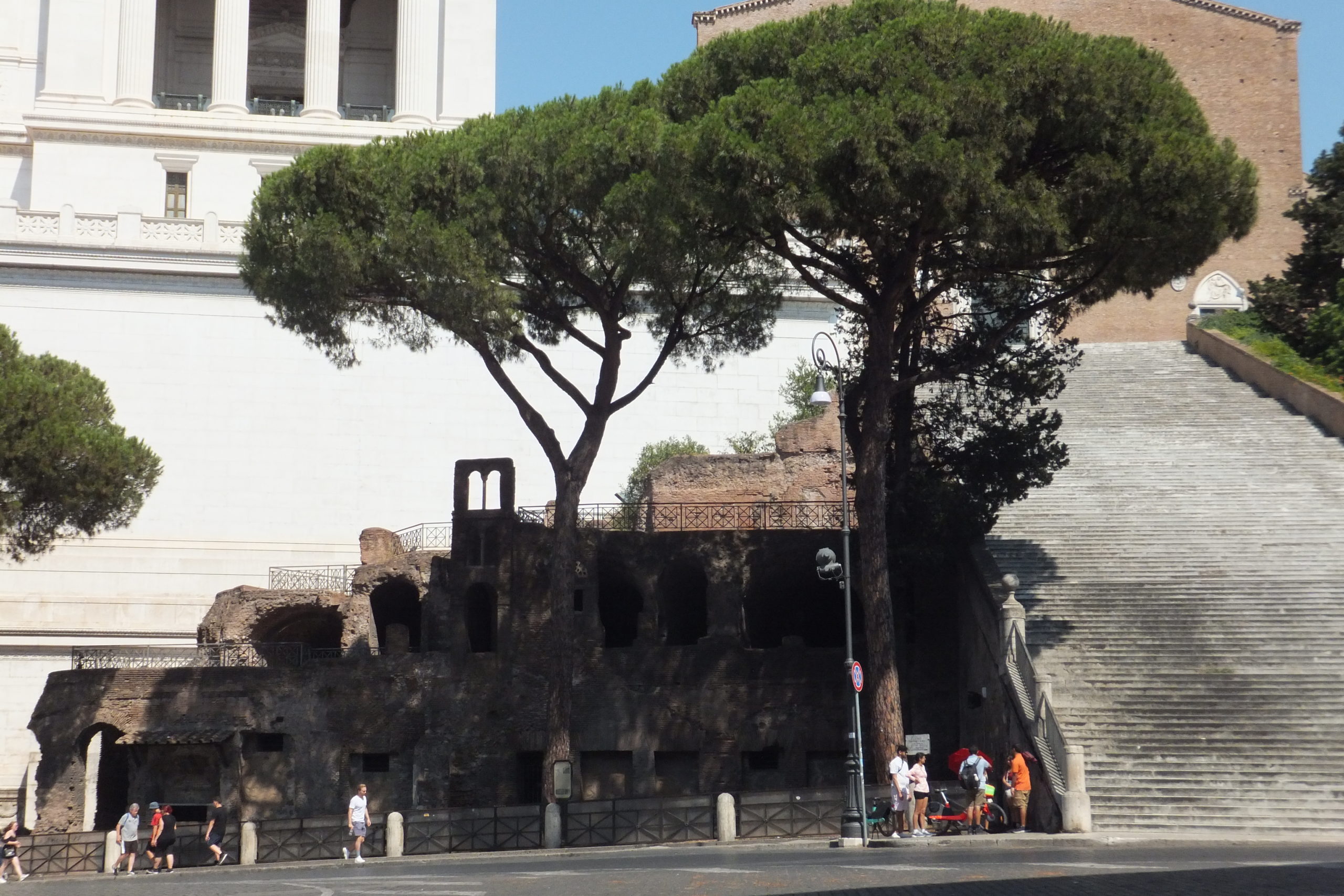
As you continue, in front and to your left, will be the steep steps to the church of Santa Maria in Aracoeli and next to it the Campidoglio. You are on the Capitoline Hill, on what is now called the Via Teatro Marcello.
This area was subject to a vast amount of construction and excavation work in the 1930s, with the aim of linking the Vittoriano, Campidoglio and Teatro Marcello. The second photo (above), shows some of the excavations, revealing ancient dwellings and businesses.
In the 1930s this road was called the Via Del Mare, as it was part of a larger series of works, constructing a road from the centre of Rome to the sea.
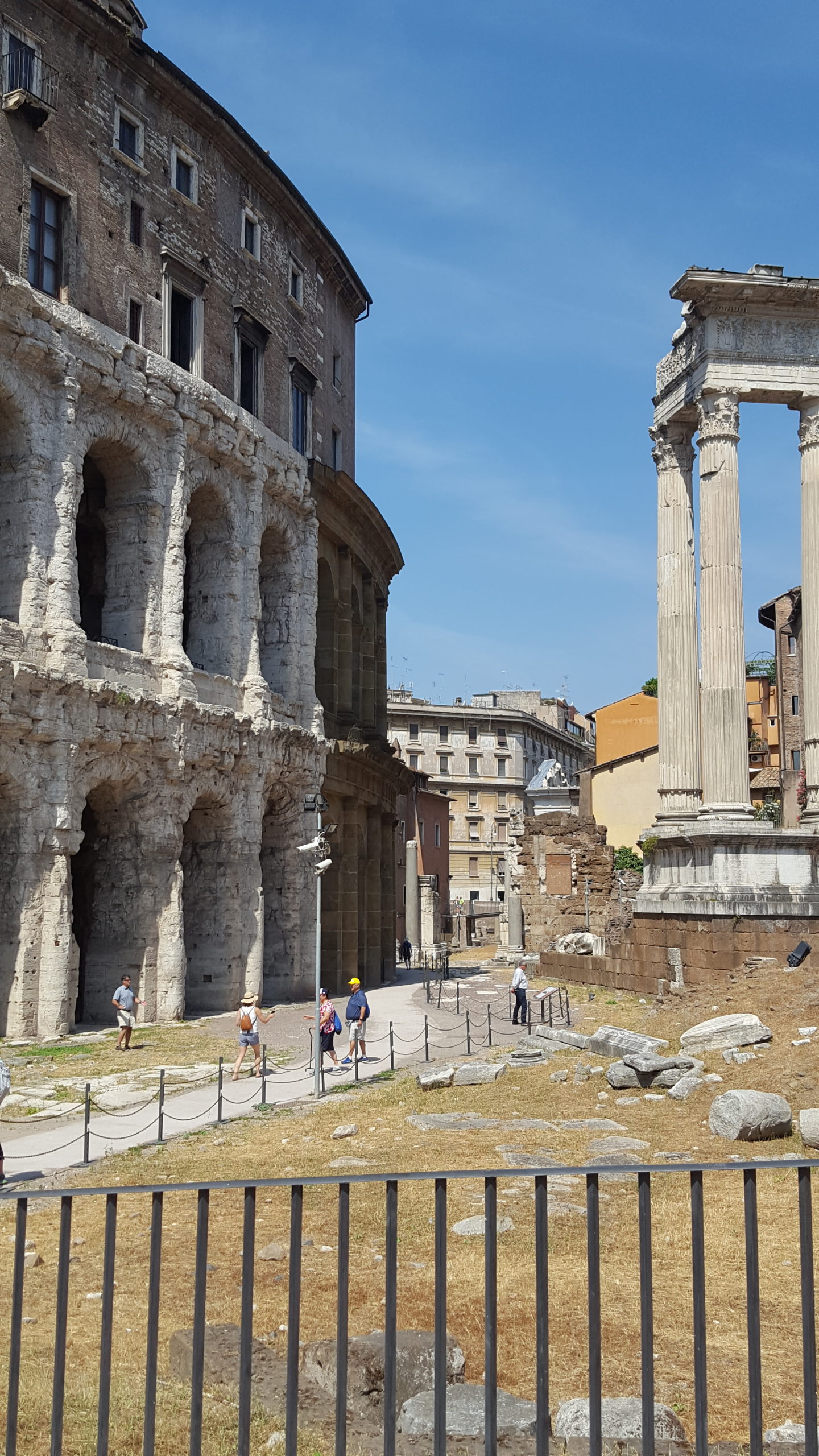
Teatro Marcello is down the hill on your right. The path around it leads to the Jewish ghetto, through the Portico D’Ottavia. Marcello was the son of Ottavia (nephew and sister of the Emperor Augustus).
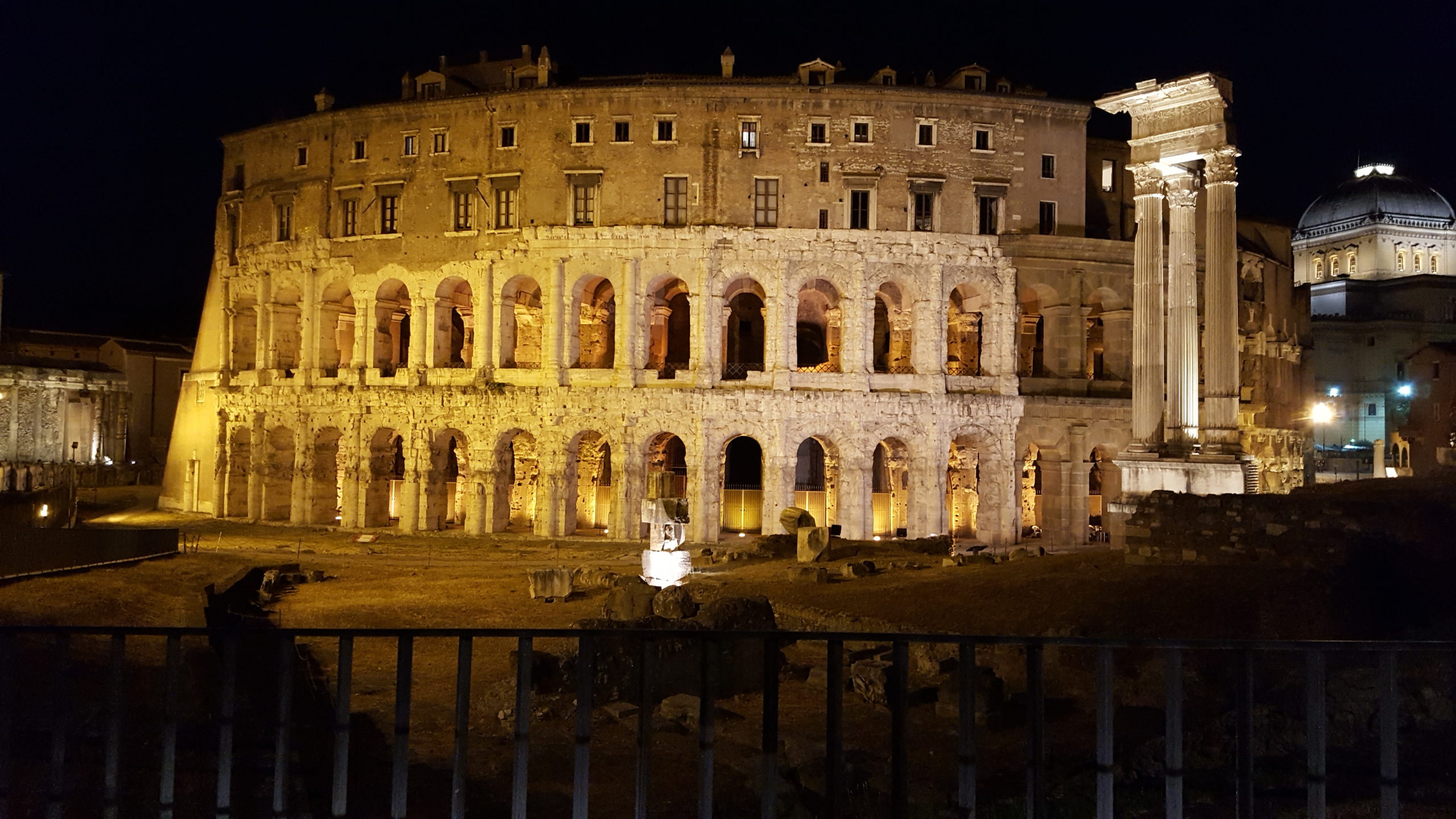
This ancient theatre looks stunning at night.
Just after you pass Teatro Marcello, look to your right and see if you can spot the Orsini bear. Both Francesca and Carlo in Shadow Song look out for that bear. It has a companion but you would have to take a detour to see the two bears, guarding their private garden.
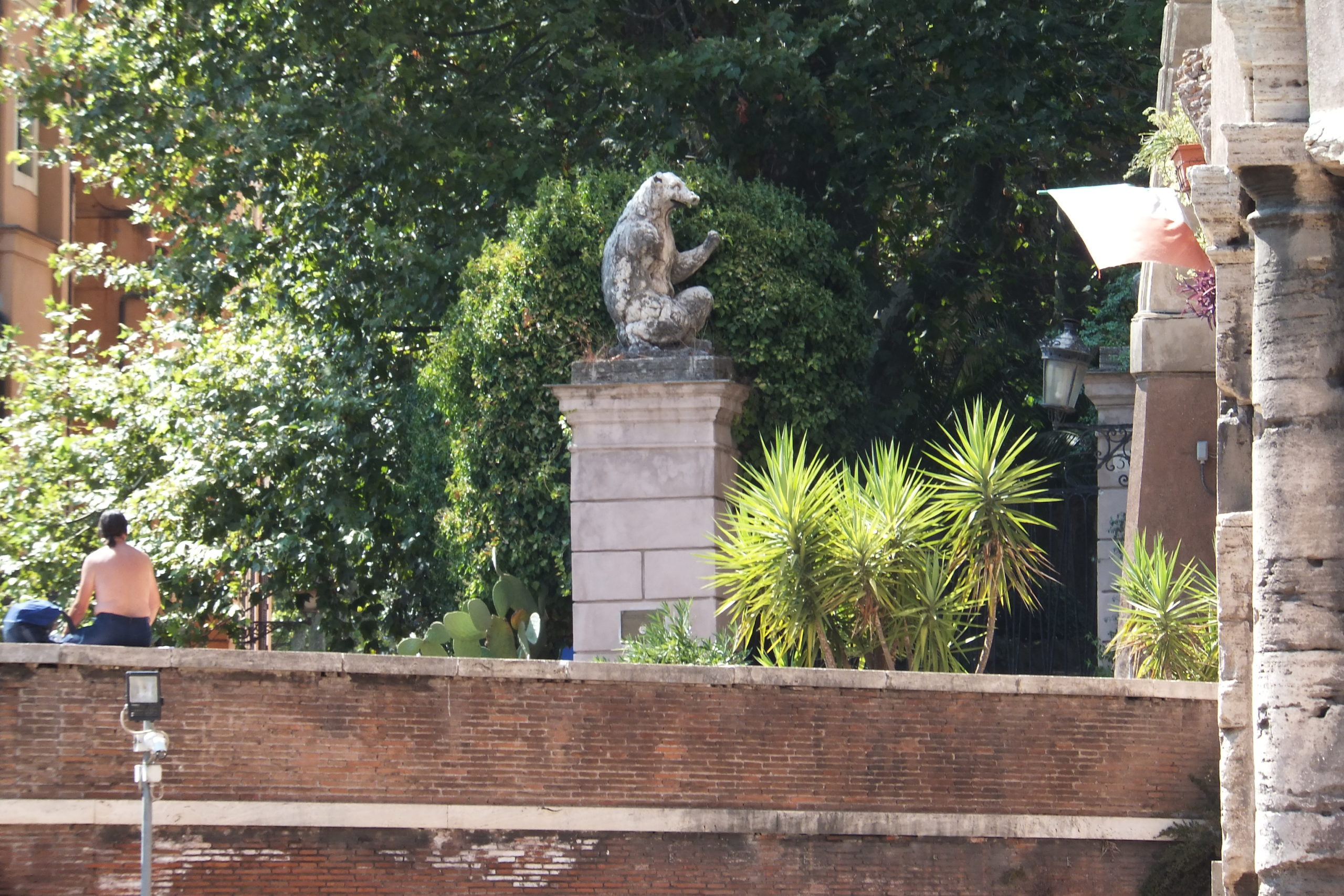
At the foot of the slope, cross the road at the traffic lights, continuing straight ahead. You will pass the small church of San Nicola in Carcere. It dates back to the eleventh century and stands in the ruins of three Roman temples. Ahead and to your right you will see two temples, one rectangular and the other round. The first is the Temple of Portuna and the second, the Temple of Ercole Vincitore. In Shadow Song, Francesca tries to sketch the latter as she hears rumours of an armistice.
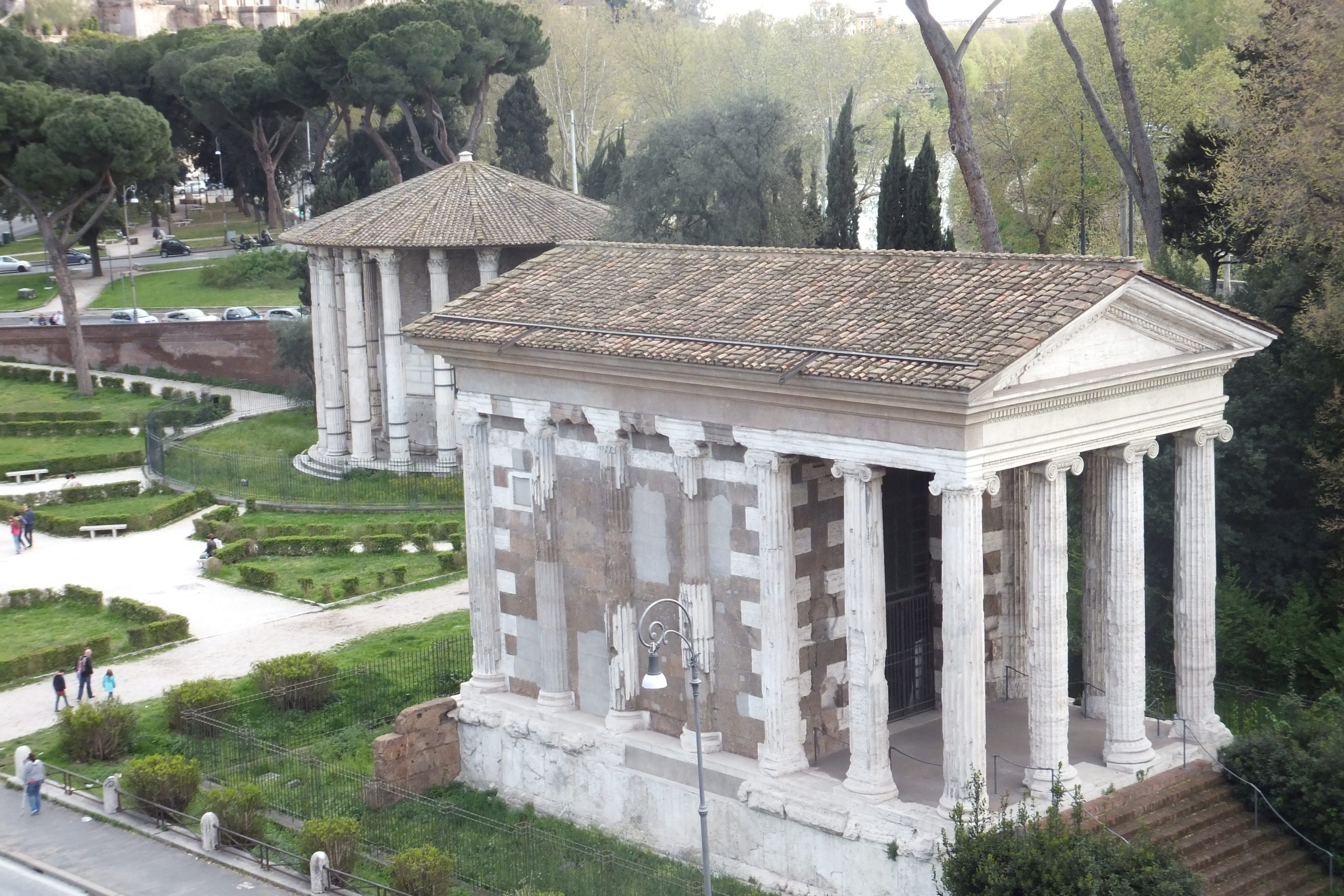
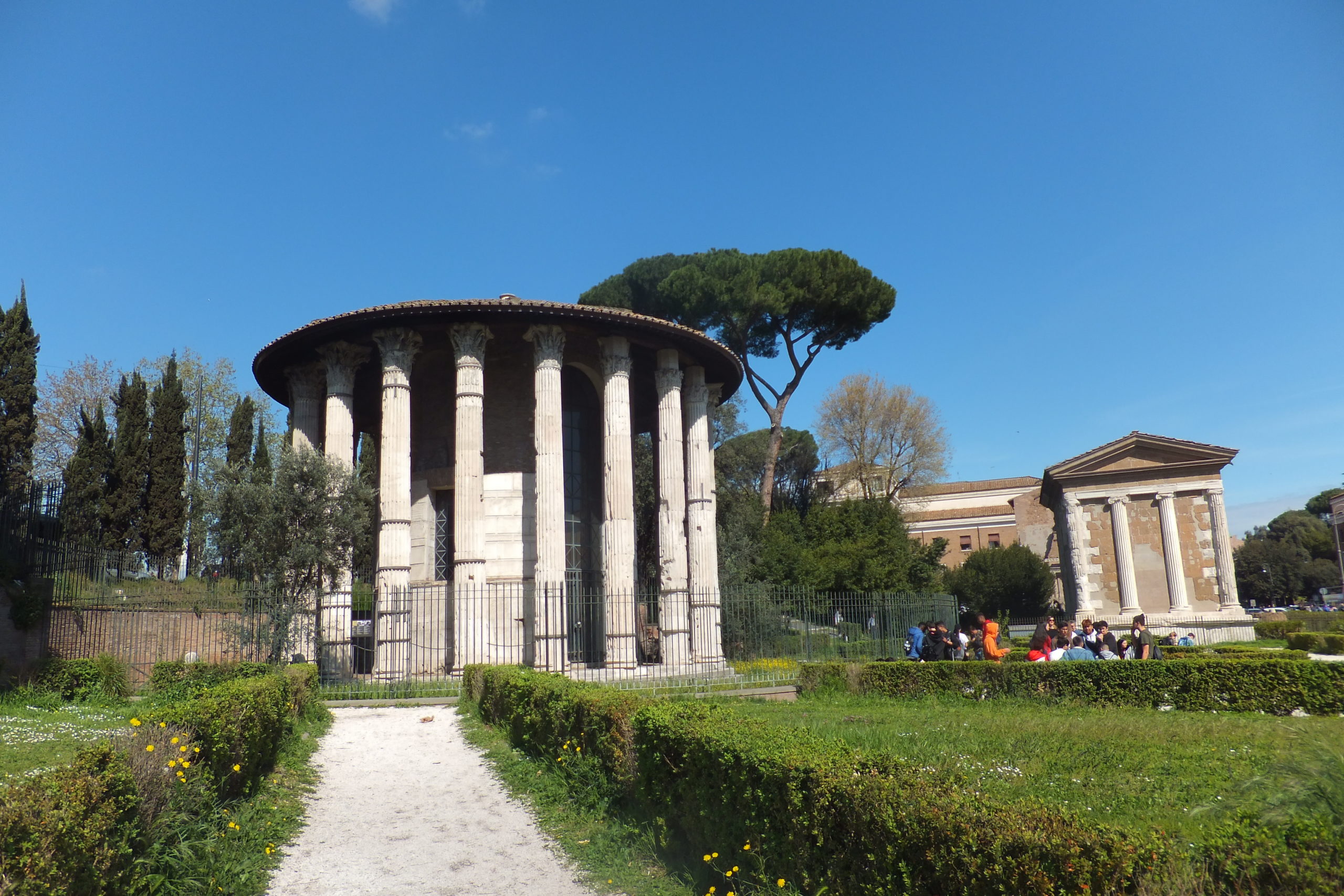
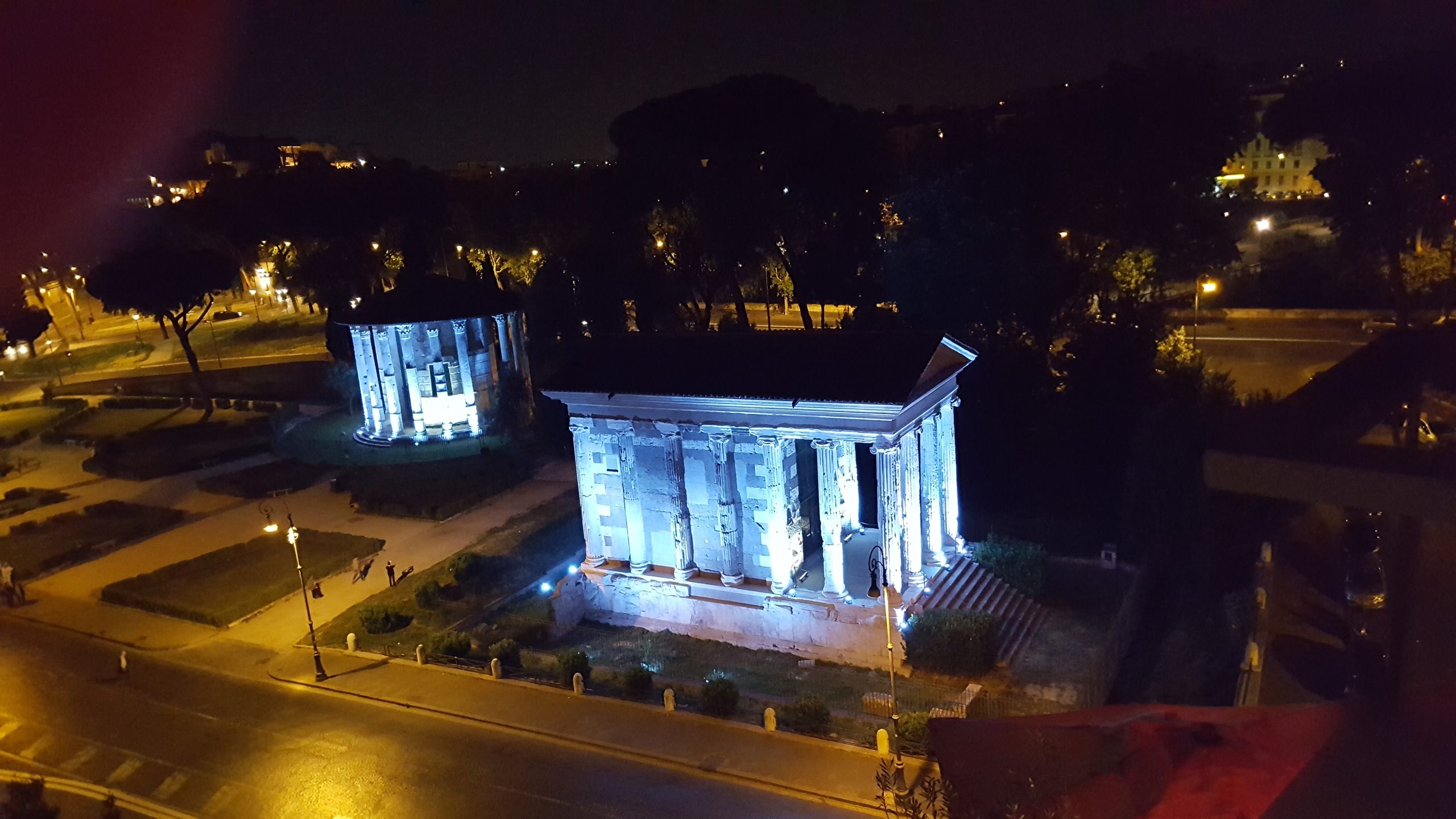
The whole area is lit up at night.
Just after the temples, you will see a fountain, the Fontana dei Tritoni. On the opposite side of the road is the soaring bell tower of Santa Maria in Cosmedin. It is also home to the Bocca della Verita (which appears in the old film Roman Holiday). You will have to queue to put your hand in its mouth. Only for the honest!
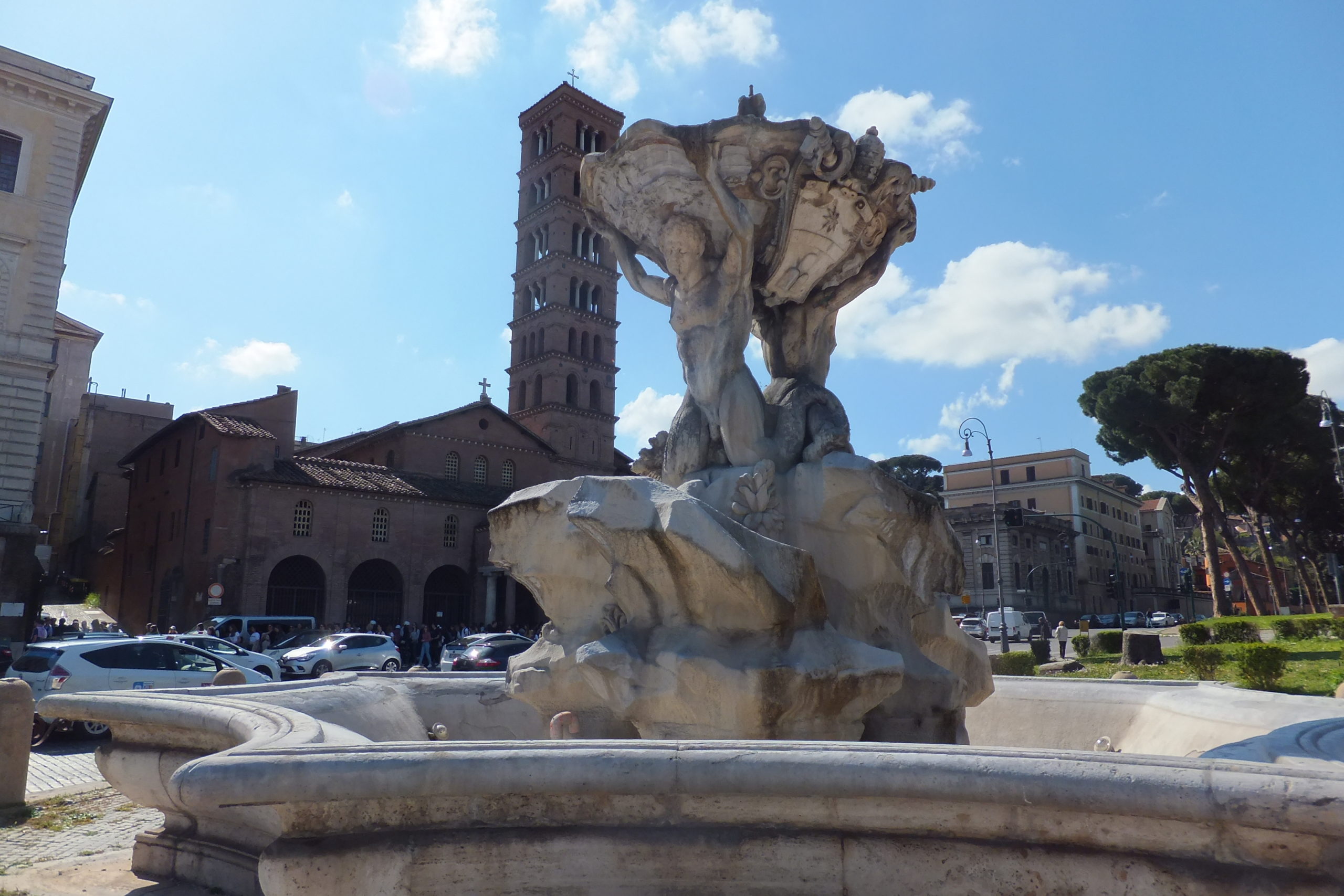
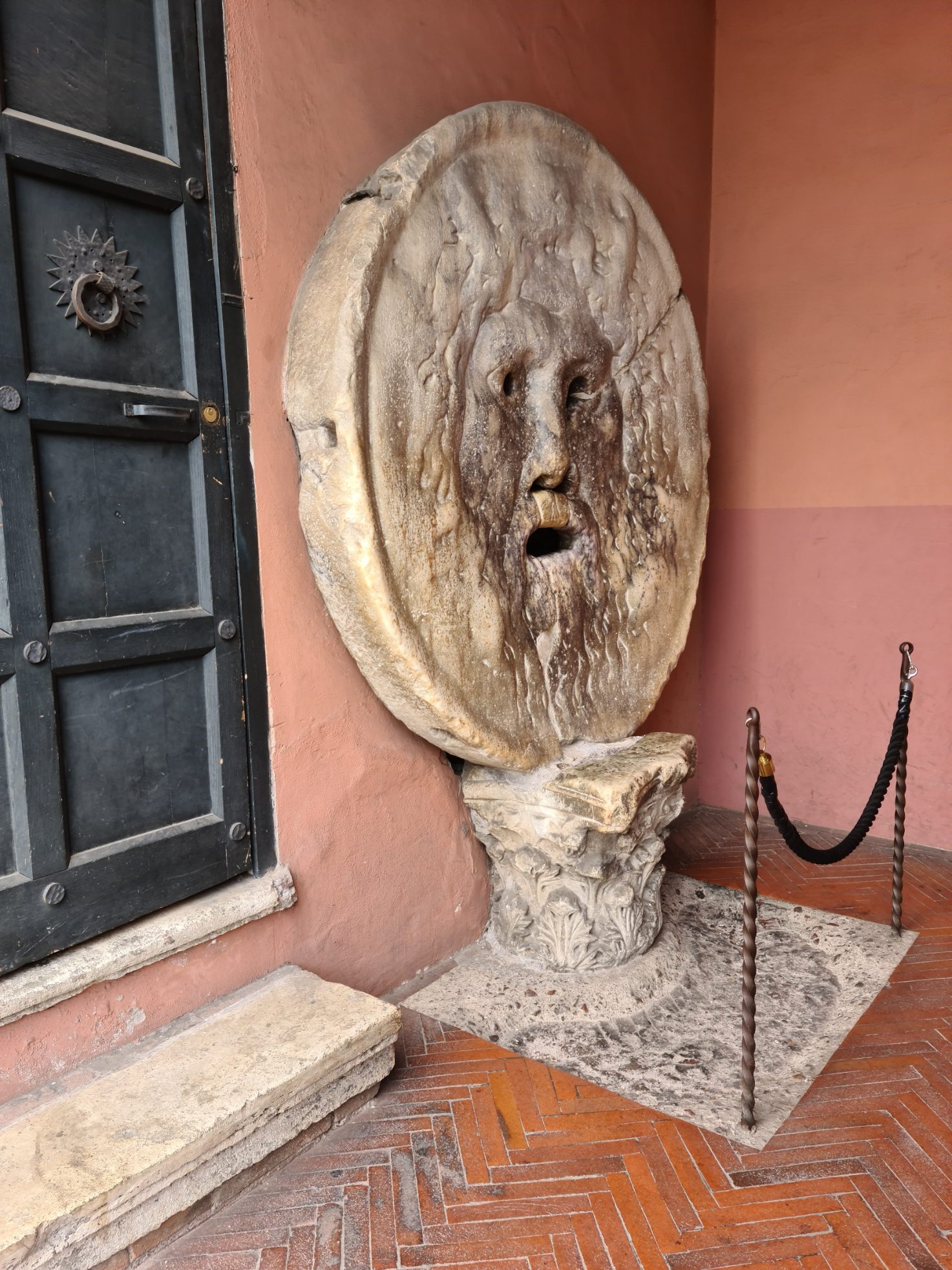
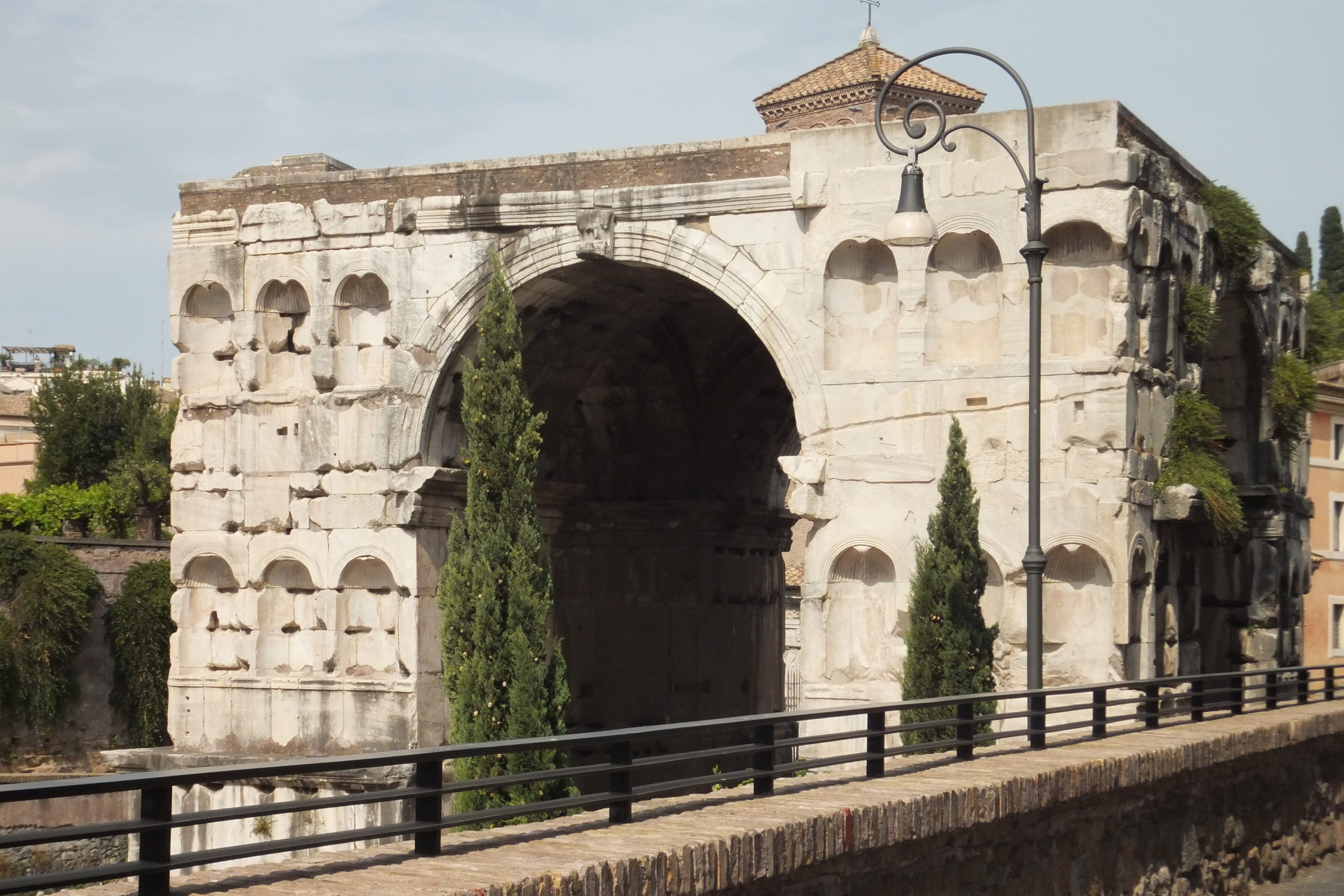
Set back, in the Piazza Bocca della Verita, is the Arco di Giano (Janus). The arch was contructed in the fourth century and spanned a busy crossroads. Janus (with his two faces) was regarded as the god of junctions.
If you turn left after the church of Santa Maria, into Via della Greca, you will start to climb the Aventine Hill. Soon you will see Circo Massimo. Above, you can see the tip of the Vittoriano, where you began the walk.
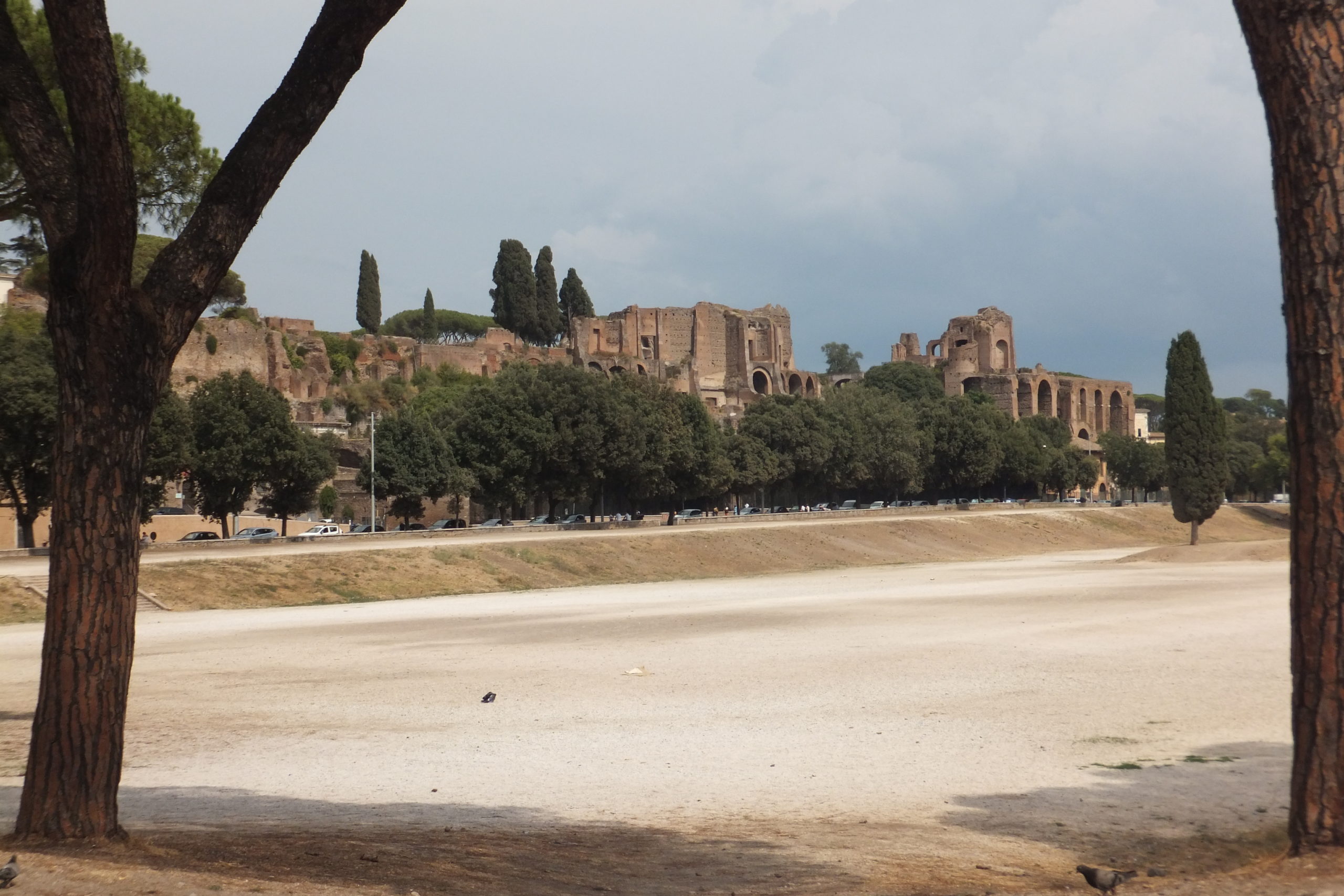
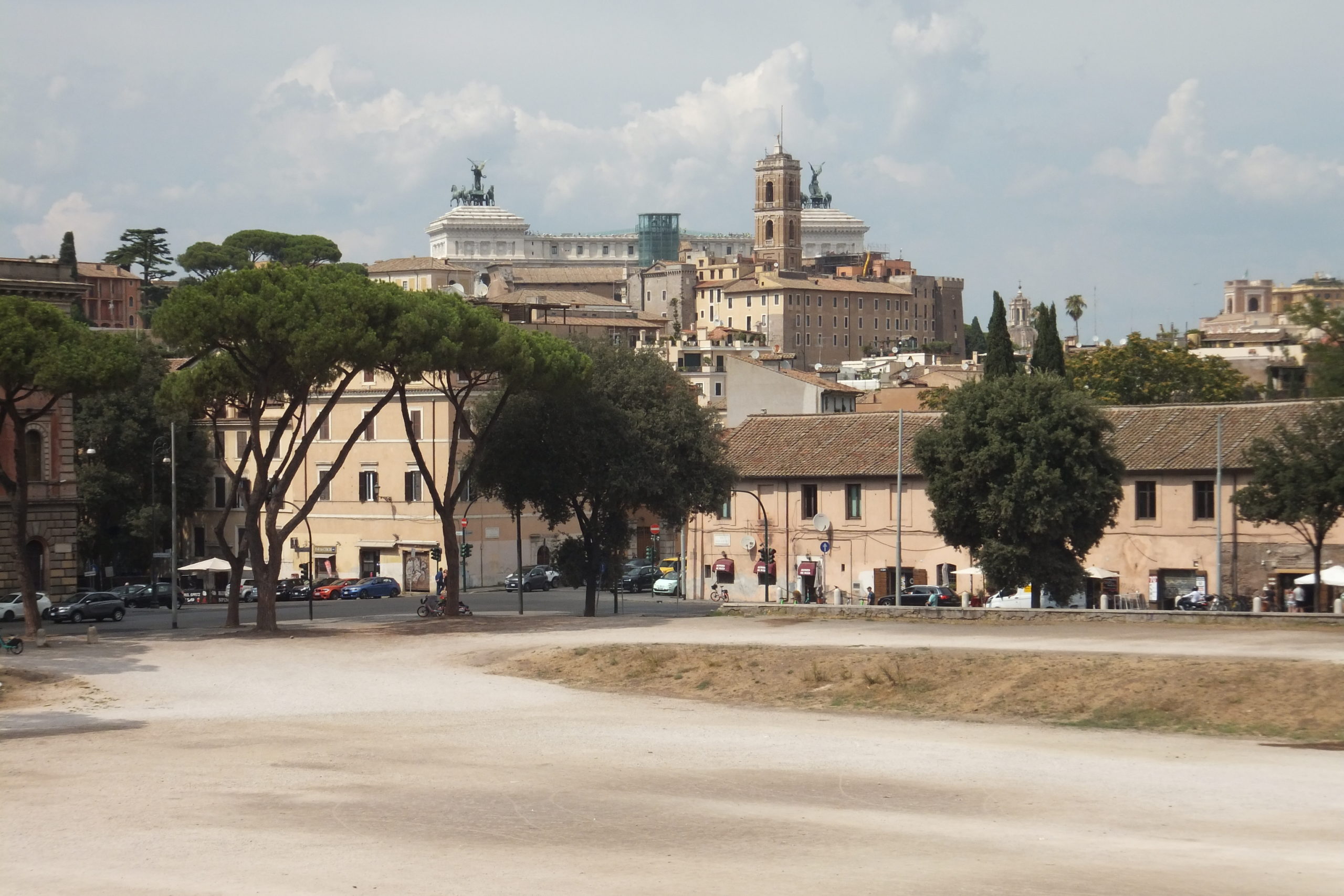
Opposite Circo Massimo, on the other side of Via del Circo Massimo, is a rose garden. The easiest way to spot it is to look out for Piazzale Ugo La Malfa and its large monument to Mazzini (a place where humans and seagulls often rest). The rose garden is immediately behind.
